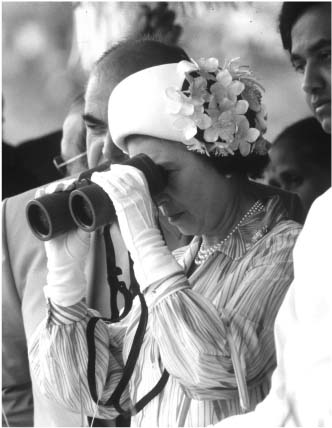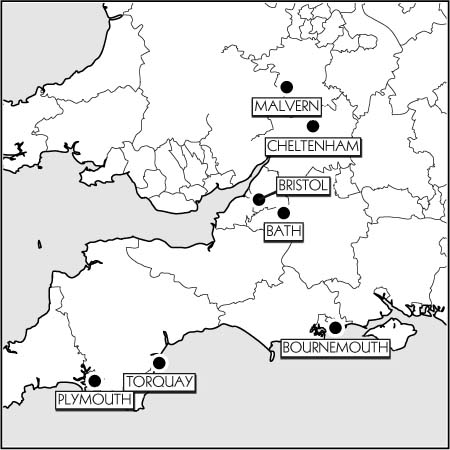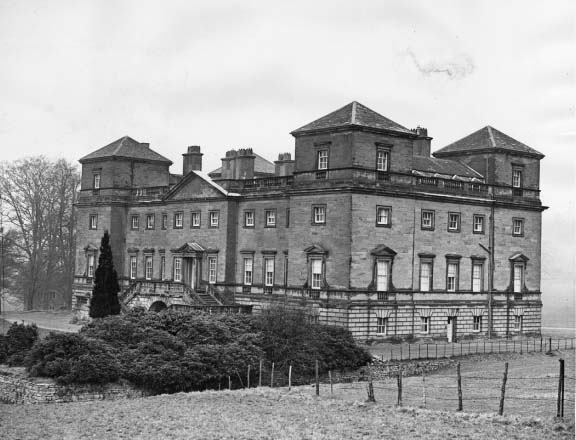Lyttelton's Britain (9 page)
Read Lyttelton's Britain Online
Authors: Iain Pattinson
C
HICHESTER
is often overlooked in favour of its more famous neighbour, Southsea, but as Southsea is a lively, bustling city dripping with a rich history, that comes as no surprise.
In the 4th Century
AD
a settlement was founded in Chichester by the Roman XXXIIIVVV Legion, the famous ‘fighting Redoubtable Stutterers’, who were actually supposed to found Chester.
In the late 16th Century, Arab dhows plying cargoes of exotic spices along the Red Sea coast down the Horn of Africa and into Zanzibar, sought another entrepot from which to trade precious stones with white slavers and the tribes of the Serengeti. Luckily they discovered Dar Es Salaam, so didn’t ever get as far as Chichester.
Chichester grew streadily from the Middle Ages and today is a market town centred around just four main streets: North Street, South Street, East Street and West Street. Originally there were more, but they were pulled down as too many visiting merchants became hopelessly lost. The city guidebook of 1423 advises that to reach the town centre from the harbour: ‘… go North up South Street, turn East along West Street, then South along North-West Street and West into South-East Street before turning North again along South-by-South-West Street
into West-by-South-West Street, taking care to ignore North- East-by-South-West-by-East-North-East-by-West-East Street which is a dead end, and then it’s first on your left.’

The 1981 Glorious Goodwood race meeting was spoiled by the appearance of a male streaker
 LYTTELTON’S BRITAIN
LYTTELTON’S BRITAIN  ENGLAND
ENGLANDTHE SOUTH-WEST


Gloucestershire, summer 2007. The government’s emergency flood defence measures prove every bit as successful as expected

C
HELTENHAM
is a fascinating city with a fine history. Originally a small Cotswold village, this spa town first found favour during the fashionable Regency period. This was largely due to the patronage of Arthur Wellesley, the Duke of Wellington (who popularised his eponymous footwear in Cheltenham), Lord Sandwich (who brought the leading convenience item food that bears his name), and Viscount Picnic (who introduced the two). Their alfresco social gatherings were invariably also graced by Alfred Thermos, third Earl of Bovril, and Sir Jonathan Annoying-Wasp.
Every March, racegoers gather at Cheltenham to enjoy the world famous Gold Cup, which was originally run over hurdles by four-year-old Arabs. Nowadays of course, they use horses.
And nearby is that acme of educational establishments, Cheltenham Ladies’ College. It is important to recall that Tim Brooke-Taylor’s mother, Rachel ‘Ray’ Pawson
*1
, used to teach gymnastics there, partly because of her unstinting services to the promotion of physical training, but mainly because a gratuitous mention of her name might result in an extra copy of this book being sold.

M
ALVERN
is a fine town boasting much of interest to the visitor. The town nestles in the Malvern Hills under the Worcestershire Beacon. After climbing to the summit, many hikers gaze out across fourteen counties, and under certain weather conditions it is possible to catch a sight of Birmingham, despite the many, clearly-posted warning signs.
The name ‘Malvern’ derives from the Celtic words describing the original settlement. The prefix ‘Mall’ means ‘spring water pools’, while the word ‘Vern’ refers to small areas of woodland. Hence the precise translation: ‘Little Wood’s Pools’.
Malvern is of course most famous for the purity of its natural spring waters which are bottled and exported worldwide. The still variety is prized as a curative for such ailments as excessive flatulence, while the sparkling variety is famous for remedying a lack of it.
Malvern’s proud boast is that theirs is the only natural spring water used by Queen Elizabeth II. And when in 1987 A Royal Act of Charter was drawn up to sanction supplies of bottled water to Her Majesty, she kindly invited the town council to witness as she passed it.
The town’s first known documentation dates from 1083, when its lavish Benedictine Monastery was built. It’s recorded that this was the cause of much friction with the nearby Convent
of St Agatha, as the monastery was maintained by a generous endowment from Edward the Confessor, and the nuns jealously eyed the monks who were obviously so well endowed.
Famous names associated with the area include Sir Edward Elgar. It was in Malvern that he composed his
Enigma Variations
, which later found great commercial stage success as
Bletchley Park, the Musical
.
The nearby public school, Malvern College, was founded in 1862. This was taken over during World War II by the Air Ministry, as a research base exploiting advances in microwave technology to develop an aircraft tracking radar system. Expected to take many months of development, they actually managed it in just two and half minutes. As a result, air defences could readily identify and bring down Luftwaffe bombers, the aircraft being hit by a barrage of piping-hot, ready-cooked pigeons.
Famous old boys of Malvern College include the occultist Alastair Crowley, and it was while at Malvern that he first became interested in Black Magic, the paranormal and reincarnation. Crowley was buried in St Wulfrun’s churchyard in 1934, at Golders Green Synagogue in 1956, and finally in 1972, at the West Dudley pet cemetery.
Another notable grave at St Wulfrun’s is that of Britain’s first recorded fatal case of asbestosis. The poor chap was buried there in 1827, but not until after they’d spent three weeks trying to cremate him.
The ancient county of Worcestershire has much to admire, including Hagley Hall, the family seat of the Lyttelton dynasty. Set in 350 acres of superbly landscaped deer park, the house contains Van Dyke masterpieces and fine Chippendale furniture. The
land, house and title have passed down the line to my cousin, Viscount Cobham, the 8th Lord Lyttelton and his heirs, meaning that at any given time I am but one, small, and entirely fatal minibus accident away from wealth, privilege and sublime indolence beyond my wildest dreams.

Hagley Hall (second gardener’s potting shed)
A world famous local product is of course Worcestershire sauce. The first reference dates from the English Civil War, when Oliver Cromwell proudly proclaimed to Parliament that he had won the Bottle of Worcester, thanks to drawing Yellow 61 in that year’s ‘Roundhead Social Club Raffle’. It was in 1835 that the famous dark and spicy condiment was discovered by two
chemists: Lea and Perrins. Their ingredients remain a closely guarded secret even today, known only to a handful of members of the Lea and Perrins families, and anyone who can be bothered to read the label marked ‘ingredients’ on the side of the bottle.